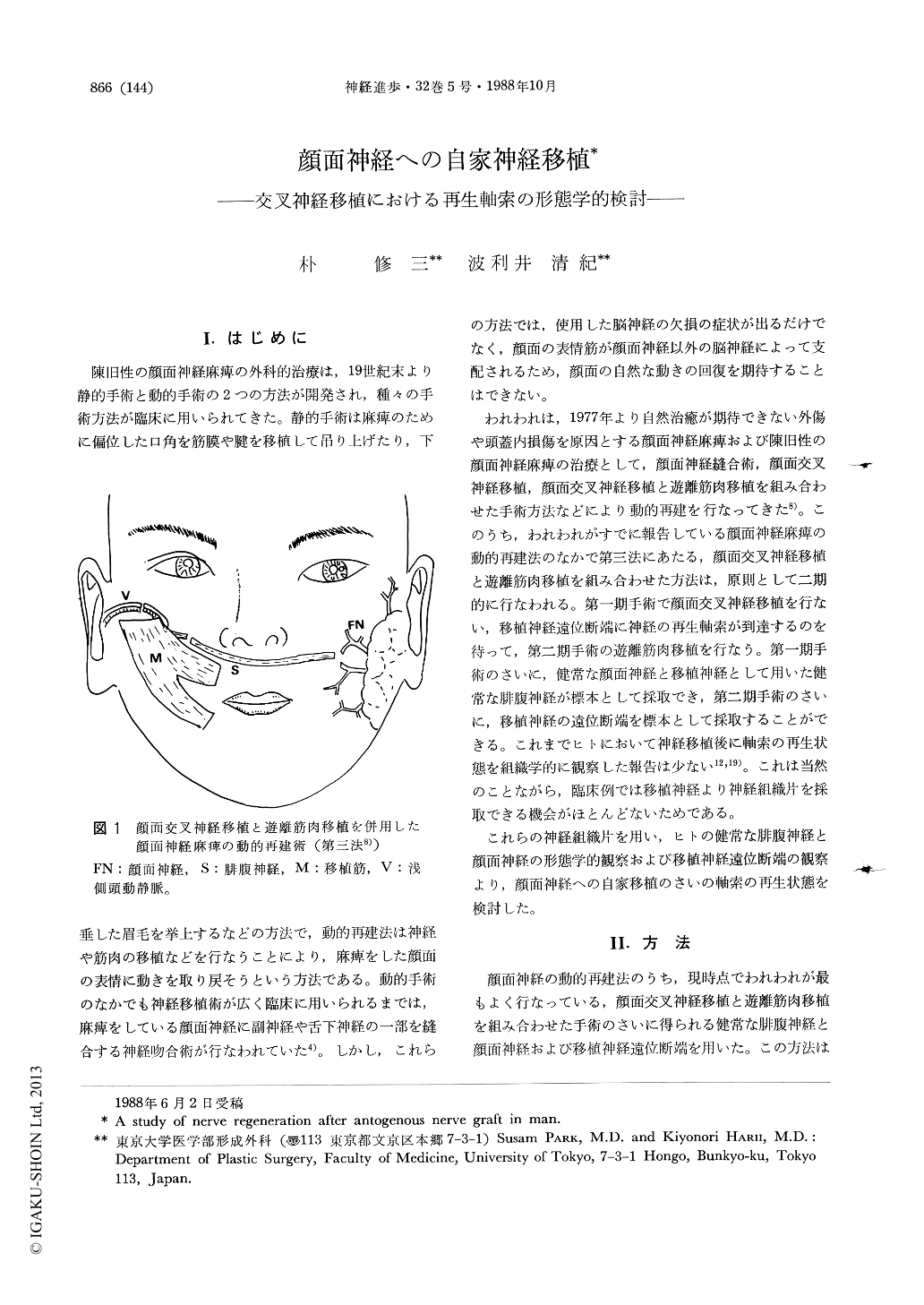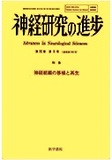Japanese
English
- 有料閲覧
- Abstract 文献概要
- 1ページ目 Look Inside
I.はじめに
陳旧性の顔面神経麻痺の外科的治療は,19世紀末より静的手術と動的手術の2つの方法が開発され,種々の手術方法が臨床に用いられてきた。静的手術は麻痺のために偏位した口角を筋膜や腱を移植して吊り上げたり,下垂した眉毛を挙上するなどの方法で,動的再建法は神経や筋肉の移植などを行なうことにより,麻痺をした顔面の表情に動きを取り戻そうという方法である。動的手術のなかでも神経移植術が広く臨床に用いられるまでは,麻痺をしている顔面神経に副神経や舌下神経の一部を縫合する神経吻合術が行なわれていた4)。しかし,これらの方法では,使用した脳神経の欠損の症状が出るだけでなく,顔面の表情筋が顔面神経以外の脳神経によって支配されるため,顔面の自然な動きの回復を期待することはできない。
われわれは,1977年より自然治癒が期待できない外傷や頭蓋内損傷を原因とする顔面神経麻痺および陳旧性の顔面神経麻痺の治療として,顔面神経縫合術,顔面交叉神経移植,顔面交叉神経移植と遊離筋肉移植を組み合わせた手術方法などにより動的再建を行なってきた8)。このうち,われわれがすでに報告している顔面神経麻痺の動的再建法のなかで第三法にあたる,顔面交叉神経移植と遊離筋肉移植を組み合わせた方法は,原則として二期的に行なわれる。
We have, since 1977, performed dynamic recon-struction of long-standing facial paralysis by com-bining vascularized muscle transplantation with a cross-face nerve graft. In the first stage, sural nerve is cabled from a healthy facial nerve stump to the affected cheek. The second stage operation, transplantation of a vascularized muscle, is sched-uled 2 to 3 months after Tinel's sign reaches the distal end of the nerve graft. We obtained speci-mens of the intact sural and facial nerves in the first-stage operation, and of the distal end of the nerve graft in the second-stage operation. We examined these specimens and then report on our study of autogenous nerve graft in man.

Copyright © 1988, Igaku-Shoin Ltd. All rights reserved.


